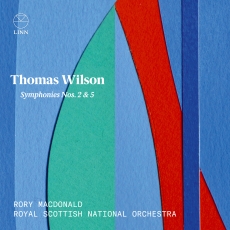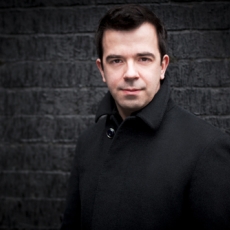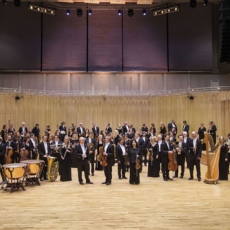Rory Macdonald & RSNO - Thomas Wilson: Symphonies Nos. 2 & 5 - Music Web International
Last year, I welcomed a release devoted to Thomas Wilson’s Symphonies No. 3 and No.4 (Linn CKD 616), and hoped for more. From the same source come Symphonies No. 2 and No. 5. This completes the cycle. The ever self-critical composer withdrew a number of earlier scores, including the First Symphony of 1955. The first deemed acceptable is the mighty Symphony No. 2. The recording showcases Wilson’s formal and orchestral mastery.
The symphony is laid out in three tightly argued movements. The very opening of the first movement lays out the material from which most of the ensuing music will be developed. This is clearly the mark of a true symphonist. The first movement unfolds towards what might at first sound as a firmly assertive climax but quite deceptively so, for the music quickly dissolves and paves the way for the second movement. This might be experienced as the symphony’s slow movement. At its centre there is what is quite rightly described as “a gnomic Scherzo” (I quote from Paul Conway’s notes here and in a few other places). The third movement picks up the energy of the first movement with some reworking of the same material. This time, however, the music carries on towards a strongly assertive conclusion. All in all, it is undoubtedly one of Wilson’s finest achievements, and a mightily impressive piece of music.
Symphony No. 5 is a later work, Wilson’s last completed score, in fact. It is audibly scored for somewhat smaller orchestral forces, and indeed it was commissioned by the Scottish Chamber Orchestra. Parts of the symphony are based on Mosaics, an earlier work composed in 1981 for the chamber ensemble Cantilena.
The Fifth Symphony is in a substantial single movement, falling into several clearly defined sections. The music unfolds through an enormous variety of musical vistas, although much of the basic material is strictly knit together. There are individual elements such as the “baleful, tenebrous idea on the timpani” that opens the symphony, and returns on several occasions. This offers a sense of unity within the apparent diversity of the often fragmentary episodes, and a sense of overall sombre atmosphere prevailing through most of the symphony. The music eventually seems to achieve some sort of inner peace in the beautiful final section “before the timpani steers the work back to its shadowy origins and the closing chord fades into silence”.
Wilson's Fifth Symphony is yet another substantial achievement in its own right but I for one think it to be more understated than its three predecessors. It is a piece that does not yield all its secrets all too readily. It needs repeated hearings. On the whole, it still retains some of the chamber-like character of Mosaics. It nevertheless is a splendid piece of music that may now be experienced and enjoyed thanks to this beautiful performance.
Rory Macdonald and the Royal Scottish National Orchestra commit themselves wholeheartedly, and do these often beautiful works full justice. The recording and production are excellent on all counts. Paul Conway’s detailed notes are an asset as always.
A quibble if there must be one: given a total playing time of under an hour, one might have wished for the inclusion of one or two shorter pieces, maybe Touchstone (1967), Toccata (1959) or Threnody (1970); this may be for some further release. It should not deter anyone willing to dug deeper into the symphonic output of one of Scotland’s greatest composers. Let us just keep our fingers crossed in expecting more. This is definitely a very fine release that deserves whole-hearted acclaim.


